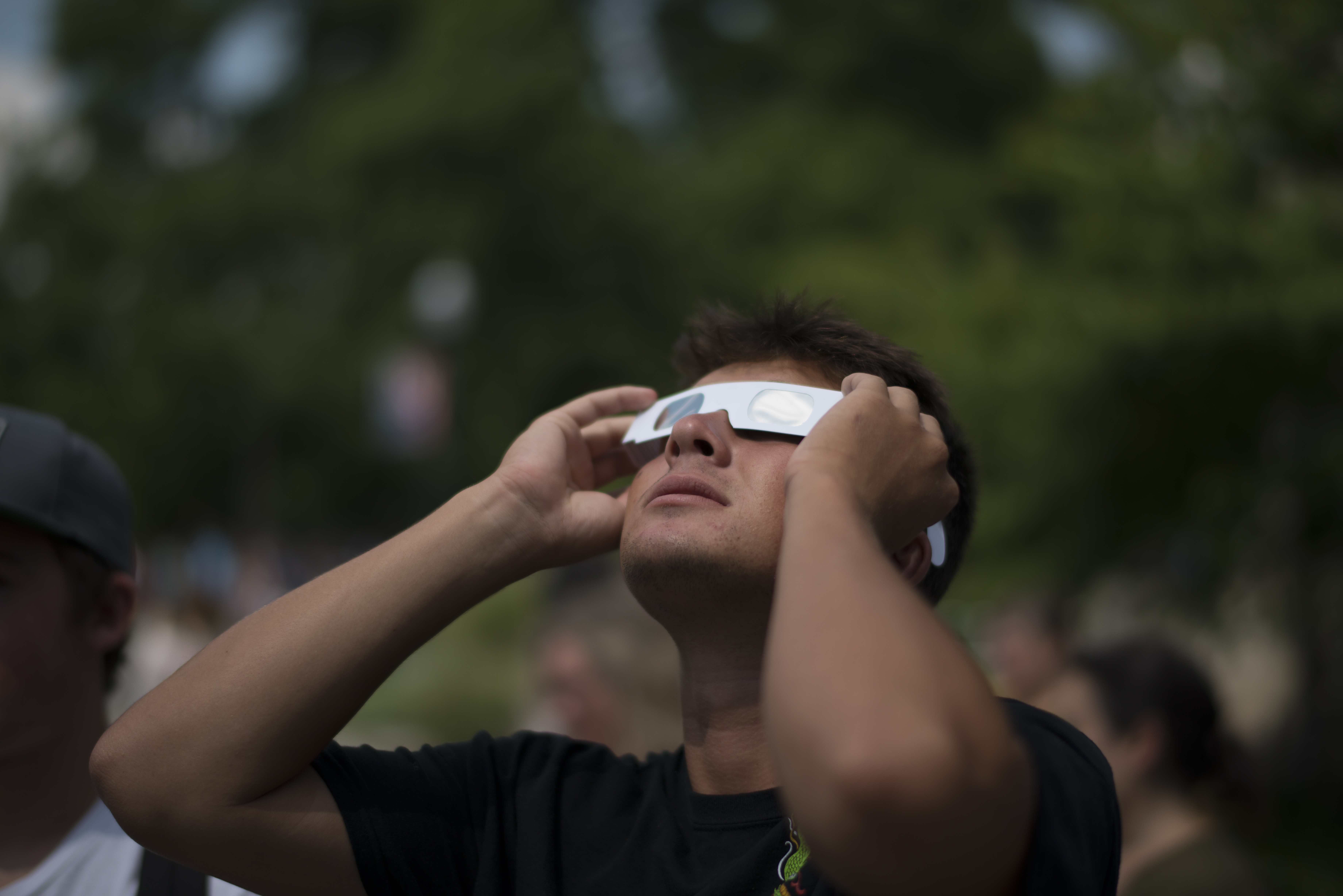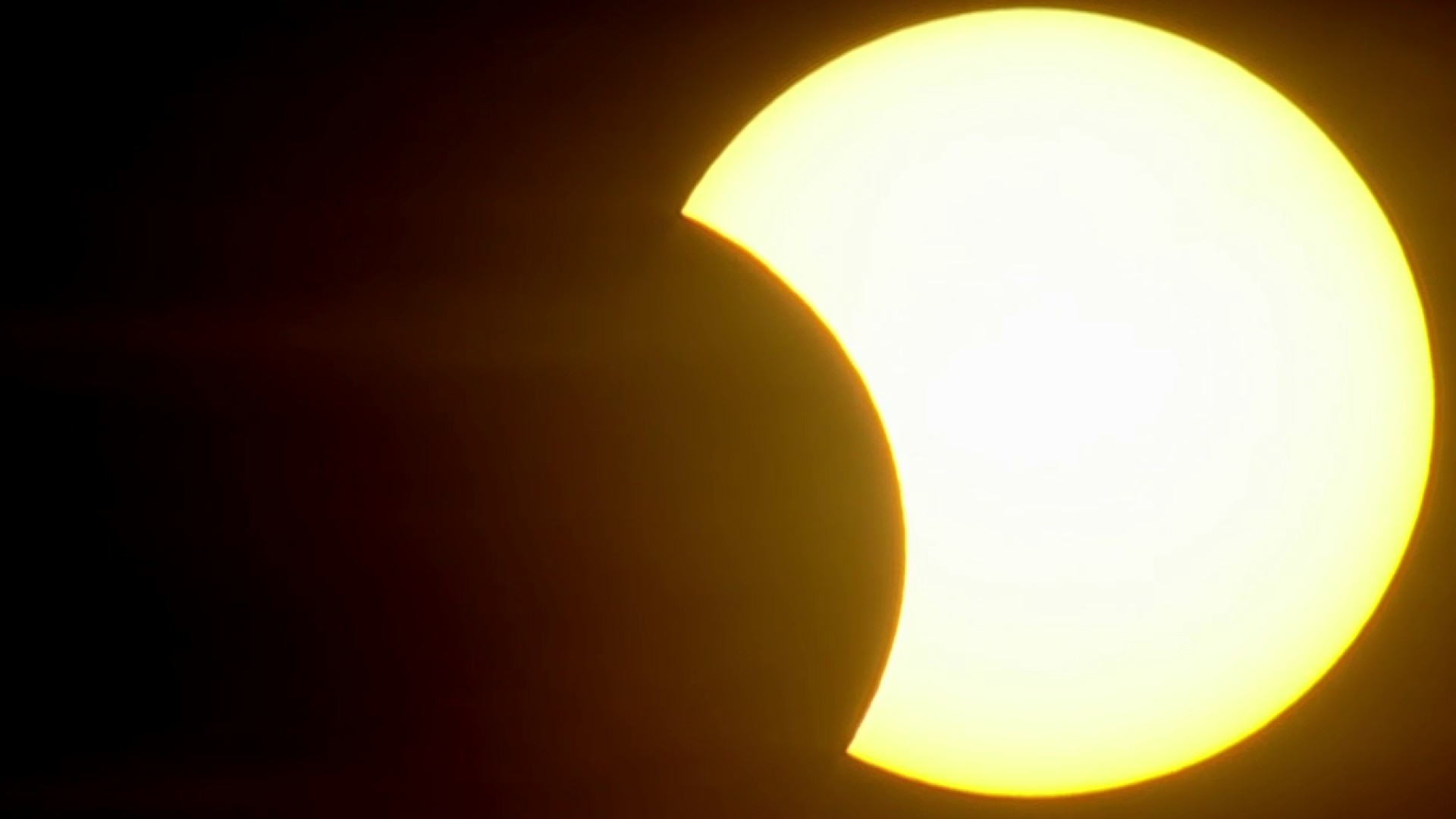Note: The video in the player above is from a previous report.
We're officially less than a month away from the next total solar eclipse, and with Illinois being one of the states in the "path of totality," Prairie State residents will be able to take in unforgettable sights of the natural phenomenon.
The eclipse will take place during the afternoon of Monday, April 8, with totality lasting around three minutes in parts of the Midwest.
Feeling out of the loop? We'll catch you up on the Chicago news you need to know. Sign up for the weekly Chicago Catch-Up newsletter here.
In Chicago area, the solar eclipse will only be partially visible, which means viewers will absolutely need solar eclipse glasses when looking at the sun.
So where will the path of totality hit in Illinois? Here's a breakdown:
Where is the "path of totality?"
The eclipse's "path of totality" will start in Southwest Texas and move northeast.
The path of totality includes the southern tip of Illinois, central and southern Indiana and Indianapolis. From there, it will race across Cleveland, Ohio; Buffalo, New York and into Maine.
"Southern Illinois is considered the eclipse crossroads of America because it was in the centerline for the path of totality in 2017 and will be again in 2024," according to the Illinois Department of Natural Resources.
The below map from the Adler Planetarium shows what the eclipse will look like in Illinois, with Carbondale, Mount Vernon, Metropolis and Mount Carmel among the southern Illinois cities in the path of totality.

According to the Illinois DNR, the full list of cities includes:
- Carbondale
- Makanda
- Alto Pass
- Fairfield
- Olney
- Golconda
- Effingham
- Mt. Vernon
- Marion
The largest Illinois city in the path of totality is Carbondale.
"In downtown Carbondale the eclipse will begin moments before 2 p.m. and last for 4 minutes and 9 seconds, which is nearly double the length of time of the 2017 eclipse," the Illinois DNR reports.
There are also 31 state parks that will be in eclipse's path of totality.
For those heading to southern Illinois to see the eclipse, the following tourist destinations are some of the places to stop along the way, according to the state's tourism website.
- Kaskaskia Dragon, Vandalia
- Big Things, Casey
- Superman Statue & Museum, Metropolis
- Fort Massac Encampment, Metropolis
- Walker's Bluff Casino & Resort, Carterville
Additionally, the following local state parks offer a picturesque setting for a nature walk on the day of the eclipse.
- Starved Rock State Park, Utica
- Matthiessen State Park, Utica
- Pere Marquette State Park, Grafton
- LaRue Pine Hills, Wolf Lake
What about Indiana?
In Indiana, the path of totality stretches from the southwest portion of the state across Indianapolis and up to the northeast.
Will it be visible from Chicago?
According to NBC 5 Meteorologist Kevin Jeanes, the eclipse will be "visible in some way from across the country."
In Chicago, however, only a partial eclipse will be seen.
Chicago and its surrounding suburbs will still experience an estimated 94% totality. That number is higher than the eclipse in 2017 and even higher than any partial eclipses expected in the near future.
When does the total eclipse begin?
Around 12:30 p.m. on April 8, the eclipse enter the country and begin moving into Southwest Texas.
From Chicago, parts of it will begin at 12:51 p.m., Jeanes said. The peak time to see it here will be around 2:07 p.m., he added.
"It's going to move slowly to begin with, and the shadow will pick up some forward speed," Jeanes said.
By 3:22 p.m., it will move out of the area.
Will I need glasses?
Yes.
"You must have glasses from Chicago, or you can make a pin hole box to view it," Jeanes said. That's because it's not safe to look at from a vantage point outside the path of totality.
"We cannot look at the sun when not its the total eclipse," Jeanes stressed.
An article from Travel + Leisure magazine agrees, citing the American Astronomical Society.
"The American Astronomical Society recommends you wear solar eclipse glasses at all times while viewing a solar eclipse," the article said. "If you are not in the path of totality, you will only ever see the partial eclipse, so it's crucial you keep your eclipse sunglasses on at all times to avoid eye damage."
According to the Adler Planetarium, viewing the solar eclipse without glasses can result in irreversible eye damage within seconds, and as your eyes lack the nerve endings to register pain as it's occurring, it'll be too late by the time you know.
If you don't have glasses however, an alternative way to safely view the eclipse is through a pinhole projector, which can be made with white card stock, aluminum foil, tape, scissors and a pin or paper clip.
More information on how to make your own can be found here.
When is the next time a total solar eclipse will occur?
The next total solar eclipse in the United States is set to place Aug. 12, 2045.
The next total solar eclipse with Chicago in a path of totality isn't until Aug. 4, 2111, Jeanes said.



